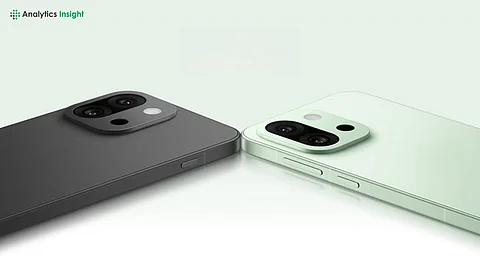

Several Android brands now offer dedicated or customizable camera buttons, inspired by the iPhone 16, enhancing photo control and ease of use.
Models like the OPPO Find X8 Pro, Sony Xperia 1 VI, and Nubia Z70 Ultra provide tactile shutter features, with some supporting two-stage presses and gesture functions.
These phones cater to photography enthusiasts, combining hardware buttons with high-end sensors, making mobile shooting feel more like traditional photography.
The smartphone camera has evolved from basic snapshots to pro-level imaging tools. With Apple’s iPhone 16 introducing a dedicated camera control button, several Android manufacturers have followed suit with their own innovative solutions. For those who appreciate tactile feedback and precision in photography, a few standout Android devices offer hardware camera controls.
The OPPO Find X8 Pro includes a dedicated “Quick Button” positioned along the frame for easy access. This two-stage button mimics a traditional camera: a light press to focus and a deeper press to capture. Integrated with the Hasselblad imaging system, this button also supports swipe gestures for switching lenses or adjusting exposure.
Key highlights:
1-inch Sony LYT-900 sensor
6x optical zoom
6.82-inch ProXDR OLED display
Snapdragon 8 Gen 3 chipset
Built with camera-first users in mind, this model delivers strong control and exceptional image quality.
Also Read: Best Periscope Camera Phones in 2025 with Next-Level Zoom Tech
Sony continues its legacy with a dedicated two-stage shutter button. Light press locks focus, while a deeper press takes the shot. Designed for a photography-focused experience, it offers tactile control similar to that of a real camera.
Standout features:
True 85–170mm optical zoom
6.5-inch 4K OLED display
Manual settings for photography professionals
A solid choice for those who value physical controls and visual precision.
The Nubia Z70 Ultra features a physical shutter button, as well as a customizable slider on the left. The shutter button allows a half-press for focus and a full-press to capture, while the slider can launch the camera, switch to silent mode, or toggle the flashlight.
Camera configuration:
50MP main camera with adjustable aperture (f/1.6 to f/4.0)
64MP telephoto
50MP ultra-wide
A versatile device tailored for serious mobile photographers.
The OnePlus 13 introduces the “Plus Key,” a customizable button replacing the classic alert slider. This key can be mapped as a camera shutter or for other smart tasks, making it ideal for those who prefer customizable hardware.
Expected to offer:
High-performance specs
Refined build quality
AI-supported features
A thoughtful mix of personalization and performance.
Also Read: Best Camera Phones Under Rs 40,000
Celebrating Leica’s 100-year legacy, the Xiaomi 15 Ultra brings modular camera gear to smartphones. Attachable shutter buttons and lens kits enhance both control and style, aiming to recreate a traditional photography experience.
Top specs include:
Leica-tuned optics
Snapdragon 8 Gen 3 processor
High-quality build and accessories
A unique pick for photography enthusiasts who enjoy customization.
Leaked renders of the Nothing Phone Pro show a flush, minimal camera button. Expected to feature haptic feedback and visual indicators via the Glyph Interface, this model is designed with simplicity and function in mind.
Rumored details:
50MP dual-camera system
Snapdragon 7s Gen 2
6.7-inch AMOLED display
A clean design approach with camera-focused innovation on the horizon.
Though lacking a physical camera button, Lava Agni 3 allows the power button to be used as a camera launcher. While not true hardware control, this approach adds convenience at a budget-friendly price point.
Main features:
64MP main camera with OIS
MediaTek Dimensity 7050 chipset
6.78-inch 120Hz display
5,000mAh battery
An ideal option for casual shooters wanting quick access.
Camera buttons may be a small detail, but they significantly enhance the overall feel of mobile photography. Tactile input, precise control, and quicker access make a meaningful difference, especially in fast-paced or creative settings.
Each phone listed above blends form and function to bring real, camera-style control into the Android experience.
